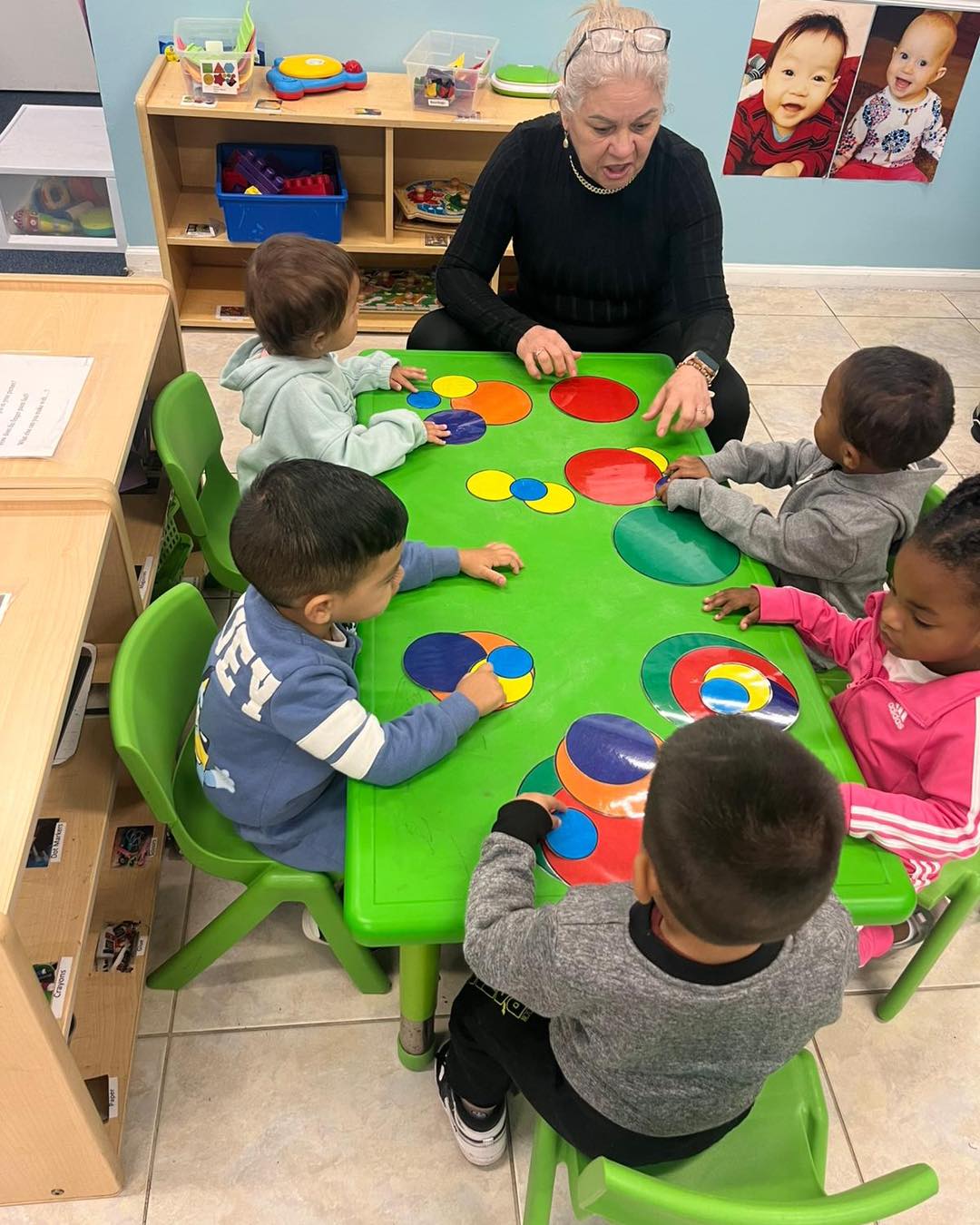The Power of Teaching Circles to Two-Year-Old’s: Building Foundational Skills Through Fun
At Bright Beginnings Prep Academy, we understand that early childhood education is more than just playtime—it’s about laying the foundation for lifelong learning. One of the simplest yet most impactful concepts we introduce to two-year-old’s is the shape of a circle. While it might seem basic, teaching the concept of a circle has significant developmental benefits for young children. From cognitive growth to language development, understanding shapes helps children build essential skills in a fun and interactive way.
This blog explores why teaching the concept of a circle is so important for two-year-old’s and how we make the learning process engaging and effective at Bright Beginnings.
Why Shapes Matter in Early Childhood Development
Shapes, like circles, are much more than visual forms—they’re building blocks of understanding the world. Teaching shapes to toddlers offers multiple developmental benefits:
1. Cognitive Development
Learning about shapes like circles helps children develop problem-solving skills and understand spatial relationships. Identifying a circle, for example, involves recognizing its round edges and distinguishing it from other shapes. This process engages critical thinking and observation, both of which are key to cognitive growth.
2. Language Development
Introducing the word “circle” and related terms like “round” and “curved” enhances children’s vocabulary. These new words give toddlers the tools to describe their surroundings, laying the groundwork for effective communication.
3. Motor Skills
Activities like drawing or tracing a circle help refine fine motor skills, as children learn to control their hand movements. Additionally, activities involving physical play, such as rolling a circular object, develop gross motor coordination.
4. Understanding Spatial Relationships
Recognizing shapes teaches children about spatial relationships, like understanding how objects fit together. For example, learning that a round peg fits in a round hole encourages spatial awareness and problem-solving.
Making Circle Learning Fun and Interactive
At Bright Beginnings, we know that young children learn best through play and hands-on activities. That’s why we make learning about circles fun, interactive, and engaging. Here are some of our favorite circle-themed activities that promote development while keeping children entertained:
1. Circle Scavenger Hunt
We set up a scavenger hunt where children search for circular objects in the classroom. Items like hula hoops, plates, and balls become part of the game. As children find each object, teachers reinforce the concept by pointing out the round edges and using descriptive words like “circle” and “round.”
Benefits:
- Enhances observation and problem-solving skills
- Introduces shape-related vocabulary in a practical context
- Encourages teamwork and collaboration among peers
2. Art with Circles
Art activities provide a creative way to explore shapes. We encourage children to paint or stamp circles using circular objects like sponges, cups, or bottle caps. They can also create collages by gluing circular cutouts onto paper.
Benefits:
- Develops fine motor skills and hand-eye coordination
- Sparks creativity and self-expression
- Reinforces shape recognition in a fun, hands-on way
3. Circle Movement Games
Physical activities help children learn through movement. For example, we might have them walk along a large circle drawn on the ground or roll a ball back and forth with a friend. Teachers use these opportunities to emphasize the round shape of the circle.
Benefits:
- Supports gross motor development
- Encourages active learning and physical play
- Builds social skills through group interaction
4. Storytime and Songs
Stories and songs are powerful tools for introducing new concepts. Books featuring circles as a central theme, such as The Dot by Peter H. Reynolds, engage children’s imaginations while teaching about shapes. Circle-themed songs, like “The Wheels on the Bus,” add rhythm and repetition, helping children remember the concept.
Benefits:
- Strengthens listening and comprehension skills
- Enhances vocabulary and language development
- Makes learning enjoyable and memorable
How Learning About Circles Supports Broader Skills
Teaching circles is about more than just recognizing a shape—it builds foundational skills that prepare children for more complex learning in the future. Here’s how understanding circles connects to broader developmental milestones:
1. Math Readiness
Recognizing shapes is an early math skill. Learning about circles lays the groundwork for understanding geometry and patterns, which are key components of early math education.
2. Problem-Solving
Identifying and sorting shapes involves logical thinking and decision-making. These problem-solving skills are crucial for tackling challenges in and out of the classroom.
3. Creativity and Imagination
Circle activities encourage children to think creatively. Whether they’re imagining a circle as a wheel, a moon, or a face, this kind of creative thinking nurtures their imagination.
4. Social-Emotional Growth
Participating in group activities centered on shapes helps children build social-emotional skills. They learn to share materials, take turns, and collaborate with their peers, fostering teamwork and empathy.
Tips for Reinforcing Circle Learning at Home
Parents play a vital role in reinforcing what children learn at school. Here are some simple ways to explore circles at home:
- Everyday Shapes: Point out circles in your environment, such as clocks, plates, or wheels, and name them together with your child.
- Baking Together: Use cookie cutters to make circular cookies or play dough shapes, combining fun with learning.
- Sorting Games: Encourage your child to sort household items by shape, such as lids, coasters, or balls.
- Books and Videos: Read circle-themed books or watch educational videos that introduce shapes in a playful way.
By incorporating these activities into daily routines, parents can help their children deepen their understanding of shapes while spending quality time together.
Bright Beginnings Prep Academy: A Place for Learning and Fun
At Bright Beginnings Prep Academy, we are committed to creating a supportive and engaging environment where children can explore, learn, and grow. Teaching shapes like circles is just one of the many ways we foster cognitive, social, and emotional development in our young learners. By combining education with play, we ensure that children build essential skills while having fun every step of the way.
Learning about circles might seem like a small step, but it’s a significant milestone in a child’s journey of discovery. Through hands-on activities, interactive games, and creative projects, we help children understand the world around them while preparing them for future success.
Conclusion
Teaching the concept of a circle to two-year-olds is much more than a lesson in shapes—it’s an opportunity to build foundational skills that will serve them throughout their lives. At Bright Beginnings Prep Academy, we make this process engaging, interactive, and meaningful, ensuring that children grasp the concept of a circle while developing problem-solving, language, motor, and social skills.
By turning simple lessons into joyful experiences, we instill a love of learning that will last a lifetime. Together with parents, we can support children in exploring, growing, and reaching their full potential—one circle at a time.



